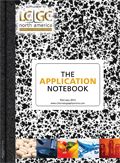Determination of Explosives in Water Using a Novel Polymeric DVB Sorbent
US EPA method 529 is the procedure to determine explosives and related compounds in finished drinking water.
US EPA method 529 is the procedure to determine explosives and related compounds in finished drinking water. The method is applicable for a variety of explosives that can be partitioned from aqueous samples onto a polymeric solid phase extraction (SPE) sorbent, and with sufficient volatility and thermal stability for GC–MS analysis. Recently, UCT developed a novel polymeric DVB sorbent for EPA method 529. One liter of water sample is passed through an SPE cartridge packed with 500 mg of the sorbent using a large sample delivery tube. The retained explosives are then eluted with ethyl acetate (EtOAc). A drying cartridge packed with anhydrous sodium sulfate is attached to the end of the SPE cartridge in the elution step, eliminating the need for a separate drying step.

SPE Materials
SPE Procedure
a) Preserve samples as stated in the EPA method 529.
b) Spike with appropriate amounts of surrogates, and target analytes for fortified samples.
c) Connect the large sample delivery tubes to the top of the SPE cartridges (ECHLD156), and attach the cartridges to a SPE manifold.
d) Wash the SPE cartridges with three aliquots of 5 mL EtOAc, condition with three aliquots of 5 mL methanol, and equilibrate with two aliquots of 10 mL DI water.
e) Insert the stainless steel ends of the sample delivery tubes into the sample bottles, and draw the entire sample through the SPE cartridge at a fast drop-wise fashion (about 15 mL/min).
f) Remove the sample delivery tubes from the SPE cartridges and dry the cartridges under full vacuum for 10 min.
g) Attach drying cartridges (ECSS15M6) to the end of SPE cartridges with cartridge adaptors (AD0000AS). Insert collection vials into the manifold.
h) Wash the sample bottles with 5 mL EtOAc, and pass the rinsate through the SPE cartridges slowly and collect. Add a second aliquot of 5 mL EtOAc to the top of the cartridge and elute the solvent slowly into the collection vial.
i) Concentrate the eluate to about 0.9 mL under a gentle stream of nitrogen at 40 °C.
j) Add internal standard and adjust the final volume to 1 mL with EtOAc.
k) The samples are ready for GC–MS analysis.
Instrumental
GC–MS: Agilent 6890N GC with 5975C MSD Injector: 1 µL on-column injection
GC column: Restek Rxi®-5sil MS 30 m*0.25 mm*0.25 µm with 10-m guard column
Carrier gas: Helium at a constant flow of 1.2 mL/min
Oven: Initial temperature at 50 °C, hold for 1 min; ramp at 8 °C/min to 210 °C; ramp at 20 °C/min to 250 °C, hold for 2 min.
Tune: bfb.u
Full Scan: 45–250 amu
Results

Table I: Accuracy and precision data
Conclusion
Excellent recoveries with an overall mean of >95% and minimum lot-to-lot variations of <10% were obtained using UCT's novel DVB sorbent for explosives in drinking water. This procedure is also applicable for explosives in wastewater (EPA method 8330) with minor modifications (SPE method available upon request).

UCT, LLC
2731 Bartram Road, Bristol, PA 19007
tel: (800) 385-3153, Email: methods@unitedchem.com
Website: www.unitedchem.com

Separation of Ultra-Short and Long Chain PFAS Compounds Using a Positive Charge Surface Column
December 11th 2024A separation of ultra-short and long chain PFAS (C1-C18) is performed on a HALO®PCS Phenyl-Hexyl column along with a HALO®PFAS Delay column which demonstrates excellent retention for both hydrophilic and hydrophobic analytes.















